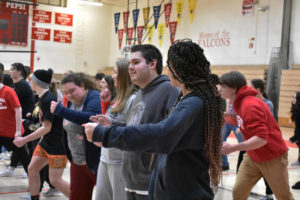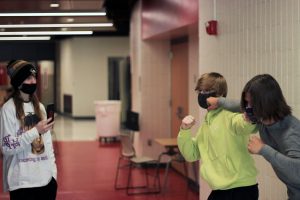Crisis drills in the Davenport Community School District
What is West’s protocol?
West is required by law to have four fire drills, four tornado drills, and two A.L.I.C.E (Alert, Lockdown, Inform, Encounter, Evacuate) drills per year.
March 20, 2019
Safety drills are important to practice in order to be prepared for a dangerous event. West is required by law to have four fire drills, four tornado drills, and two A.L.I.C.E (Alert, Lockdown, Inform, Encounter, Evacuate) drills per year.
Fire drills
Fire drills were introduced into schools in 1958 after the Our Lady of the Angels School fire killed 92 students and three teachers in Chicago, Illinois.
“Large fire incidents change school fire procedures,” Lt. Zach Soliz said.
Since then, fire drills have seen very few changes in their protocol.
“Unless something comes out, we don’t update fire drills,” Soliz said.
Every building is responsible for creating a crisis management plan, which is the basis for how the Davenport School District responds to an emergency. This plan is updated annually due to changes in staff, facilities, procedures, or hazards, according to the Davenport Community Schools website.
Tornado drills
Although likely introduced later, tornado drills have also changed very little. The last tornado that threatened Davenport occurred nearly two years ago. The Davenport tornado was rated an EF2, or a two on the Enhanced Fujita scale. EF2 refers to the amount of damage that can or will be caused by the tornado this also measures wind speed, which is rated on a scale from one to five, with five being the most dangerous.
The tornado damaged multiple farm silos and broke telephone polls. While this tornado wasn’t necessarily powerful, it still shows a need to prepare for this event at West.
Both fire and tornado drill procedures adorn the walls of every classroom.
A.L.I.C.E drills
A.L.I.C.E stands for Alert, Lockdown, Inform, Counter, and Evacuate. Before the mass shooting at Columbine High School in Colorado, which was one of the deadliest school shootings in history, lockdowns consisted of hiding under a table and waiting until the shooter was no longer a threat. Lockdown remained in the school curriculum for quite some time, until recently when it was replaced with A.L.I.C.E. drills.
The A.L.I.C.E drills provide more options such as to run, hide, or fight back.
“We need to be prepared for an active shooter,” administrator Charlie Driscoll said.
Teachers discuss with their classes about where to go and what to do in these situations, which can help students prepare in the likelihood an event like this would occur.
Security
West has four security guards working full time, as well as an officer trained to disarm a gunman.
“A locked door is a good thing, but if the shooter wants to get in, he/she will,” Driscoll said.
Head security guard Ricky Terrell says all security guards have assigned areas for set crisis drills.
Reacting to a school shooting has been a learning process for school districts nationally. The students in the library during the Columbine incident did exactly as they were told, and that was to hide under the tables. This is where the most deaths occurred.
“A.L.I.C.E, as it’s been in the past, has not allowed for fighting back,” social studies teacher Jodi Zimmerman said.









